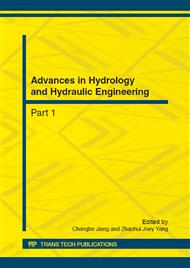p.846
p.853
p.859
p.863
p.873
p.878
p.883
p.887
p.891
Influence of Fineness Coordination of Different Cementitious Materials on Volume Stability of Hydraulic Concrete
Abstract:
In this paper, the influence of the combination and fineness coordination of different cementitious materials on volume stability of hydraulic concrete were studied. With method of concrete drying shrinkage test, mortar flat test and steel ring test(ASTM C1581), the effects of cement with different fineness, different kind of mineral admixture and their combination with each different fineness levels on the concrete deformation were discussed. And the relations between the various influencing factor and concrete cracking were carried out.
Info:
Periodical:
Pages:
873-877
Citation:
Online since:
October 2012
Authors:
Price:
Сopyright:
© 2012 Trans Tech Publications Ltd. All Rights Reserved
Share:
Citation:


